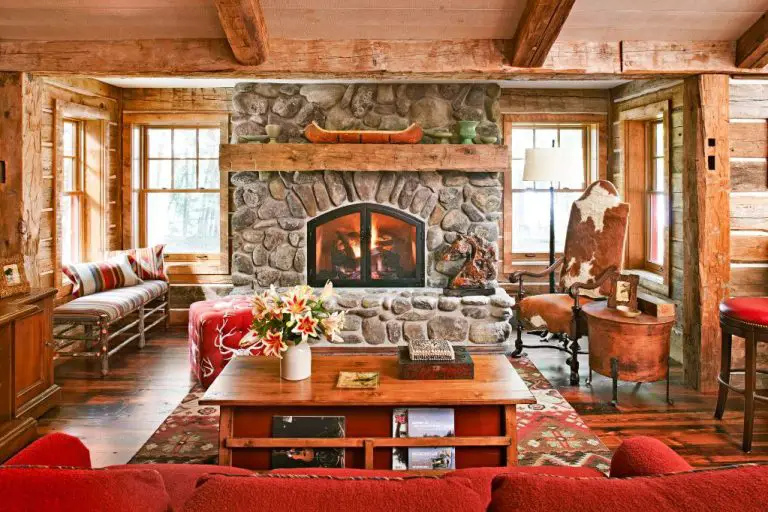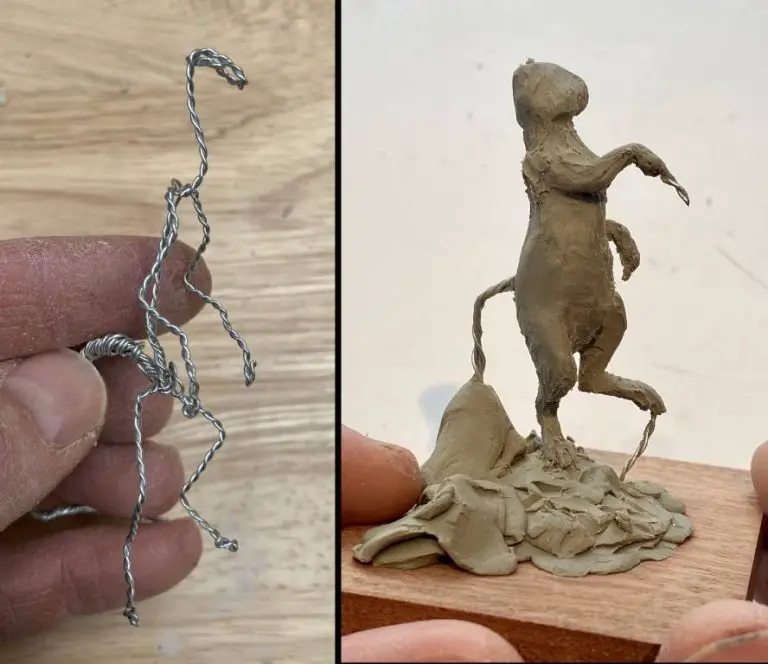What Is Golden Glazing Liquid Used For?
What is Golden Glazing Liquid?
Golden Glazing Liquid is an acrylic polymer emulsion medium designed specifically for acrylic painting techniques like glazing, scumbling, and other specialty finishes (https://goldenartistcolors.com/resources/glazing-liquid). It has a syrup-like consistency and dries slower than regular acrylic mediums, allowing more time for blending and manipulating paint on the canvas.
The main ingredients in Golden Glazing Liquid are 100% acrylic polymers and water. This makes it compatible with any Golden acrylic paint. It doesn’t contain any oils, allowing the paint to retain its authentic acrylic properties and permanence.
What sets Golden Glazing Liquid apart from regular acrylic glazing mediums is its slower drying time and ability to facilitate blending without disrupting lower layers of paint. The viscosity and leveling properties also help paints spread smoothly across the canvas. This makes Golden Glazing Liquid ideal for both painting and decorative techniques where extended working time is needed.
Decorating Uses for Golden Glazing Liquid
Golden glazing liquid has become a popular decorating tool for bakers, cake decorators, and candy makers because of its versatile decorative effects. The thick consistency and high gloss finish of golden glazing liquid make it perfect for adding metallic accents, shimmery drizzles, and edible paint effects to all kinds of baked goods and confections.
One of the most common uses of golden glazing is to add metallic accents to cookies, cupcakes, and cakes. A small amount of edible gold, silver, copper, or bronze powder can be mixed into the glaze before applying. The glaze helps the powder adhere evenly, creating beautiful metallic finishes like gold leaf or bronze patina on edible decorations (source).
Cake decorators often use golden glazing as edible paint to hand-paint intricate designs directly onto cakes and cookies. The slow-drying time allows decorators to create smooth color gradients and detailed effects. Once dry, the acrylic-based glaze creates a durable, shiny painted finish.
For candy making, drizzling or dipping candy apples, chocolate, or other confections in golden glazing liquid is an easy way to add instant shimmer and shine. The thickness helps the glaze adhere evenly for a smooth, glass-like glazed effect.
How to Apply Golden Glazing
Golden glazing liquid can be applied in several different ways depending on the desired effect. Here are some tips for application:
Brush: Use a soft brush to apply glazing liquid smoothly and evenly over a surface. This works well for covering large areas. Be sure to use light, feathery strokes and not overwork the glaze.
Drizzle: Hold the glazing bottle 6-12 inches above the surface and drizzle glaze lightly over the area. Tilt and turn the bottle to create drips and splatter effects. This creates a more textured, organic look.
Dipping: For small objects, dip them directly into glazing liquid to coat. Tap off any excess before setting aside to dry.
In terms of quantity, apply glazing liquid sparingly. Just a small amount creates a transparent stained effect. For more intensity, additional coats can be applied once dry. It’s better to build up the glaze gradually.
Allow each layer of glaze to dry completely before adding another coat. Drying times vary based on thickness but can range from 10-30 minutes. Avoid overworking the glaze while wet as this can lift and peel the layers underneath.
Proper application is key for achieving beautiful glazing effects. Experiment with different tools and techniques to find what works best for your project.
Source: https://goldenartistcolors.com/resources/glazing-liquid
Tips for Using Golden Glazes
When using Golden glazing products, it’s important to follow some key tips to get the best results:
First, be sure to store the glaze properly after opening to prevent drying out or skinning over. Keep the container tightly sealed and store upside down to prevent air exposure. Some artists recommend transferring to a smaller sealable jar for storage between uses.
Next, avoid any lumps or clumps forming in the glaze. Always stir thoroughly before use. If lumps do form, use a paint filtering bag or strainer when pouring to remove them. Adding a bit of water and stirring vigorously can also help smooth out thicker areas.
Finally, choose the right consistency for your application. For general glazing techniques, a thin, milky consistency works well. For textural effects, you may want a thicker mixture. Test your glaze thickness on scrap material first before applying to your main piece. Add water or glazing medium to reach the desired transparency and thickness.
Following these tips will lead to smooth, even glaze applications without frustrating clogs or drying issues.
Recipes Using Golden Glazes
Golden glazes can add an elegant metallic sheen to baked goods and confections. Here are some delicious recipes that incorporate golden glazes:
Glazed Donuts
Golden glazes pair beautifully with sweet breakfast treats like donuts. After frying or baking plain donut rings, dip them into a thinned golden glaze for an indulgent morning snack. Let the excess glaze drip off before serving for a shiny metallic coating (Reynolds Gold Metallic Glaze).
Glazed Fruit Tarts
For an elegant dessert, brush golden glaze over fresh fruit tarts. Try it on tarts made with berries, stone fruits like peaches, or citrus. The glaze will dry with a lovely edible gold shimmer. Dust with powdered sugar before serving if desired.
Metallic Chocolate Truffles
To make gourmet chocolate truffles, dip solid chocolate ganache centers into golden glaze instead of regular chocolate. Let set completely before enjoying these fancy candy treats. The gold coating gives them an extra touch of decadence.
Troubleshooting Golden Glazing
Golden glazing liquid can be tricky to work with, and many artists run into issues with clumping, thickness, and uneven application. Here are some tips for troubleshooting common problems with golden glazes:
If your glaze is forming clumps or uneven texture, try adding a bit more water or glazing medium to thin it out. According to recommendations from WetCanvas forums, adding 15-20% water or glazing medium can help smooth out the consistency. Stir thoroughly and test on a scrap surface before applying to your artwork. Add small amounts at a time until the desired consistency is reached.
You can also try switching to a different applicator tool, such as a soft brush, rag, or sponge. Avoid overworking the glaze or overbrushing once applied. Let it set for a minute and then gently smooth out any brush marks or unevenness. According to tips on WetCanvas, sometimes less is more when working with finicky glazing mediums.
When thinning out the glaze, make sure not to overdo it. Getting the mixture too thin can cause it to break apart or become translucent on the surface. Test on scrap materials first before applying to your artwork. Add water, medium, or acrylic thinner in small increments until reaching the optimal consistency.
Storing Golden Glazing
Like all acrylic paints, golden glazing liquid has a shelf life that depends on how it is stored after opening. According to GOLDEN Artist Colors (https://goldenartistcolors.com/resources/glazing-liquid), glazing liquid should be stored in a cool, dry place after opening. Avoid freezing the glazing liquid, as that can cause issues with consistency. Store in the original container or transfer to an airtight plastic container.
For best results, GOLDEN recommends storing glazing liquid between 60-75°F if possible (https://justpaint.org/shelf-life-of-golden-acrylics/). Refrigerating the glazing liquid is not necessary and could cause problems, as bringing the cold liquid back to room temperature can lead to condensation inside the bottle. Keeping it at room temperature in a closet or cupboard is ideal.
With proper storage, golden glazing liquid can last 2-5 years after opening before it starts to thicken or become unusable. Keeping the container tightly sealed and avoiding extreme temperature fluctuations will help maximize its usable shelf life after opening.
Safety Precautions
When using Golden Glazing Liquid, it’s important to follow safety guidelines to avoid potential health hazards.
Golden Glazing Liquid contains solvents that can be harmful if ingested. According to the Golden Paints Safety Data Sheet, ingestion may cause dizziness, nausea, and vomiting. Seek medical help if ingested.
To handle Golden Glazing Liquid safely:
- Work in a well-ventilated area and avoid breathing vapors directly.
- Wear gloves to prevent skin contact.
- Wash hands thoroughly after use.
Be sure to keep Golden Glazing Liquid tightly sealed and out of reach of children when not in use. Like other solvent-based art materials, ingestion by children may be harmful.
By following basic safety precautions, Golden Glazing Liquid can be used safely without health risks.
FAQs
Here are some frequently asked questions about Golden Glazing Liquid:
What are common questions about usage?
Some common questions about using Golden Glazing Liquid include:
- How many layers of glaze can be applied? Typically 1-3 thin layers are recommended for best results (Golden).
- Does the glaze need to be sealed? Yes, it’s recommended to apply a varnish or topcoat after the glaze dries to protect the finish.
- What surfaces can glaze be used on? It adheres well to primed canvas, wood, metal, plaster, and more.
What are good substitutions?
If you don’t have Golden Glazing Liquid on hand, some possible substitutions include:
- Soft gel gloss or matte medium diluted with water
- Acrylic paint diluted with water or acrylic medium
- Store-bought ceramic glazes thinned with water
How does it compare to other glazes?
Compared to other acrylic glazing liquids, Golden’s product is known for:
- Long open time for blending layers
- Good transparency and clarity
- Versatility on many surfaces
- High quality archival pigments
It produces a subtler effect compared to ceramic glazes which contain more intense colors and opacity.
Final Tips
Here are the key takeaways for using golden glazing liquid successfully:
Glazing liquid helps unify colors, adjust hues, and add depth to acrylic paintings (Source: https://www.acrylicuniversity.com/blog/how-to-unify-the-colors-in-your-painting-glazing). Apply in transparent layers, allowing each layer to dry between applications. Thin with water or glazing medium as needed.
Use glazing techniques to create interesting textures by stippling, ragging, sponging and more. Let underlayers show through for visual depth (Source: https://goldenartistcolors.com/resources/glazing-liquid).
Experiment with glazes over underpaintings, collage papers, photos, transfers, prints, and more as creative inspiration. Glazes bring depth, interest, and cohesion to all these media.
Golden and Liquitex professional-quality glazing liquids are available at art supply stores or online retailers like Blick Art Materials, Jerry’s Artarama, and Dick Blick.
With some thoughtful experimentation, golden glazing liquid can take acrylic painting projects to the next level. Enjoy the creative possibilities!





